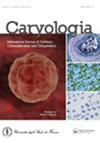Mutagenic and Cytotoxic Activity of Insecticide Napoleon 4EC in Allium cepa and Ames Test
IF 2.1
4区 生物学
Q2 Agricultural and Biological Sciences
引用次数: 0
Abstract
The objective of this study was to explore the mutagenic and cytotoxic effects of Napoleon 4EC pesticide used in Turkey to control insect pest by using two standard assays. The Allium cepa test was used for determined the cytotoxic effects of this pesticide. For this test, onion seeds were exposed to Napoleon 4EC (100, 200, and 400 ppm) for 24, 48, and 72 hours. For each test group root tip cells were stained with Feulgen and five slides were prepared for each concentration and counted microscopically. The concentrations Napoleon 4EC was compared with the value for the negative control using Dunnet-t test, 2 sided. The results indicated that mitotic index was clearly decreased with increasing the concentration of Napoleon 4EC in each treatment group as compared to the controls. The percentage of mitotic phases has been markedly impacted. Five different doses of the pesticide (50, 100, 200, 400, 800 μg/plate) were examined with Ames test using Salmonella typhimurium strains TA98 and TA100 with and without S9 metabolic activation for mutagenic activity. Ames test results showed a dose dependent effect, but not twice the negative control for S. typhimurium TA98 and TA100, with or without S9 mix except 800 μg/plate doses. In 800 μg/plate doses, colony numbers are two-fold increase according to colony number of control group. So, this places the this compound as a weak mutagen according to the parameters.杀虫剂拿破仑4EC对葱的致突变性和细胞毒活性及Ames试验
本研究采用两种标准测定法,探讨了拿破仑4EC农药在土耳其防治害虫时的致突变性和细胞毒性作用。采用大蒜试验法测定了该农药的细胞毒作用。在这个测试中,洋葱种子暴露在拿破仑4EC(100,200和400ppm)中24,48和72小时。对每个实验组的根尖细胞进行Feulgen染色,每种浓度制备5张载玻片,显微镜下计数。采用Dunnet-t双侧检验,将拿破仑4EC浓度与阴性对照值进行比较。结果表明,与对照组相比,随着拿破仑4EC浓度的增加,各处理组有丝分裂指数明显降低。有丝分裂期的百分比受到了明显的影响。采用鼠伤寒沙门菌TA98和TA100菌株进行Ames试验,测定5种不同剂量(50、100、200、400、800 μg/平板)的致突变活性。Ames试验结果显示,除800 μg/盘剂量外,加或不加S9的鼠伤寒沙门氏菌TA98和TA100均呈剂量依赖效应,但不是阴性对照的两倍。在800 μg/平板剂量下,菌落数较对照组增加2倍。根据这些参数,这个化合物是弱诱变剂。
本文章由计算机程序翻译,如有差异,请以英文原文为准。
求助全文
约1分钟内获得全文
求助全文
来源期刊

Caryologia
生物-遗传学
CiteScore
1.60
自引率
23.80%
发文量
26
审稿时长
12 months
期刊介绍:
Caryologia is devoted to the publication of original papers, and occasionally of reviews, about plant, animal and human karyological, cytological, cytogenetic, embryological and ultrastructural studies. Articles about the structure, the organization and the biological events relating to DNA and chromatin organization in eukaryotic cells are considered. Caryologia has a strong tradition in plant and animal cytosystematics and in cytotoxicology. Bioinformatics articles may be considered, but only if they have an emphasis on the relationship between the nucleus and cytoplasm and/or the structural organization of the eukaryotic cell.
 求助内容:
求助内容: 应助结果提醒方式:
应助结果提醒方式:


